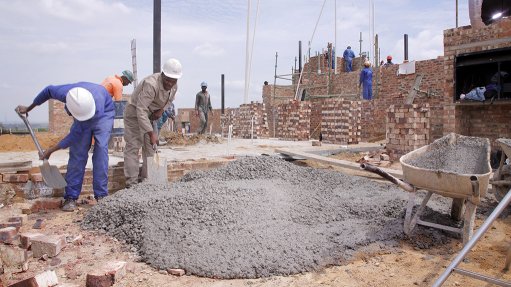Adventures on the interconnected power system
I worked for State-owned power utility Eskom as the senior engineer for operations in the Eastern Cape for just under two years. It was a fabulous job. I reported to the chief engineer, who, in turn, reported to the regional manager. But both the chief engineer and I had a reporting responsibility to national control, located at Simmerpan, in Germiston, on Gauteng’s East Rand.
I have had difficulty in explaining to people (both technically trained and not technically trained) what, in fact, I did. I explained as follows: the Eskom power system (as was then) consisted of about 17 coal-fired power stations, several hydropower stations and a nuclear power station in Cape Town. These stations fed power into the national grid with a peak demand of about 20 000 MW. The backbone of the national grid was the 400 kV and 220 kV powerline systems, which formed the main transmission system.
The operators at national control had a computer system that showed them the status of these two systems. The computer system alerted them when any of the power lines in these systems had tripped out or was overloaded. The operators then shifted load, if necessary, from one line to another and liaised with the operators of the generator control system to increase or decrease the levels of power generation. The national grid cannot store any power; what is generated has to be used – so, it is a balancing act.
The 400 kV and 220 kV power systems fed, through transformers, into the 132 kV distribution systems. The whole power system, including distribution, was known as the interconnected power system. Each region (I think there were seven of them) had a 132 kV distribution system.
My region, the Eastern Cape, extended from Colesberg to the Transkei border and then south to about 50 km south of Port Elizabeth. In that area, there were 30 000 km of powerline rated at below 132 kV – yes, 30 000 km. It was the aim of our region to keep power outages (that is, when consumer electricity supply was interrupted) down to no more than one outage per consumer per kilometre per year. Our regional manager, Ken Garman, and his second-in-charge, Corrie Viljoen, were very hot on this. In essence, since there are 8 760 hours in a year, and since there were single consumers (such as farmers) and other single consumers (such as large municipalities), our permitted outage rate was about ten a day.
To deal with outages, we had a control room with regional controllers who logged and reported power interruptions, dispatched repair teams, shifted loads using computer remote control, and so on – all to reduce outage times. The control room staff reported to me. I was new to Eskom; they were not. They were tolerant and I was eager and quick to learn. The problems that required decisions, especially swift decisions, were referred to me. We had no cellphones but all the operations management staff had two-way radios fitted into their vehicles, and so we could relay messages through the regional control.
The problems were real; for example, I would be called and told that the Pembroke Buffalo powerline (the 132 kV Number 1 line) had tripped on overload. What to do? I would reason as follows: Pembroke Buffalo powerline Number 1 runs in parallel with Pembroke Buffalo powerline Number 2. If Number 1 had tripped on overload, then Number 2 would also be overloaded and should have also tripped. But this had not happened. Thus, the overload on Number 1 line was not as it seemed. Instruction to regional control: “Open the circuit breakers both ends of Number 1 line and do an inspection line patrol.” If I was right, we would find the problem. If I was wrong . . . worse. It was fun and absorbing. Next week: more about the interconnected power system.
Comments
Announcements
What's On
Subscribe to improve your user experience...
Option 1 (equivalent of R125 a month):
Receive a weekly copy of Creamer Media's Engineering News & Mining Weekly magazine
(print copy for those in South Africa and e-magazine for those outside of South Africa)
Receive daily email newsletters
Access to full search results
Access archive of magazine back copies
Access to Projects in Progress
Access to ONE Research Report of your choice in PDF format
Option 2 (equivalent of R375 a month):
All benefits from Option 1
PLUS
Access to Creamer Media's Research Channel Africa for ALL Research Reports, in PDF format, on various industrial and mining sectors
including Electricity; Water; Energy Transition; Hydrogen; Roads, Rail and Ports; Coal; Gold; Platinum; Battery Metals; etc.
Already a subscriber?
Forgotten your password?
Receive weekly copy of Creamer Media's Engineering News & Mining Weekly magazine (print copy for those in South Africa and e-magazine for those outside of South Africa)
➕
Recieve daily email newsletters
➕
Access to full search results
➕
Access archive of magazine back copies
➕
Access to Projects in Progress
➕
Access to ONE Research Report of your choice in PDF format
RESEARCH CHANNEL AFRICA
R4500 (equivalent of R375 a month)
SUBSCRIBEAll benefits from Option 1
➕
Access to Creamer Media's Research Channel Africa for ALL Research Reports on various industrial and mining sectors, in PDF format, including on:
Electricity
➕
Water
➕
Energy Transition
➕
Hydrogen
➕
Roads, Rail and Ports
➕
Coal
➕
Gold
➕
Platinum
➕
Battery Metals
➕
etc.
Receive all benefits from Option 1 or Option 2 delivered to numerous people at your company
➕
Multiple User names and Passwords for simultaneous log-ins
➕
Intranet integration access to all in your organisation

















